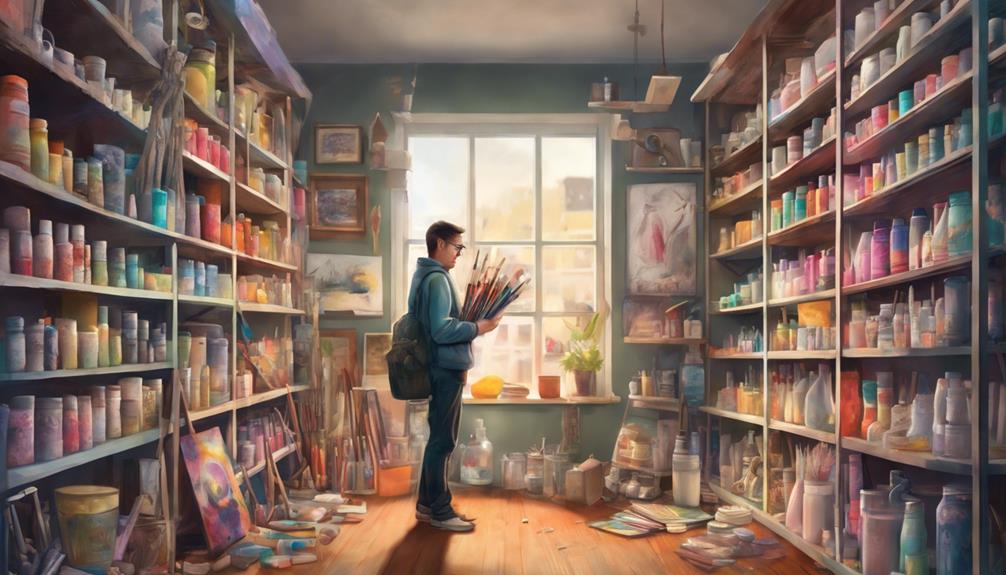Artists navigate a complex web of considerations when selecting materials for their creations. The decision-making process involves a blend of practicality, artistic vision, and sometimes a touch of daring experimentation. The materials chosen not only serve as the physical foundation of the artwork but also as a conduit for the artist's expression. Understanding the nuances behind these choices offers insight into the intricate relationship between an artist and their craft, shedding light on the deliberate thought processes that underlie each stroke of the brush or sculpting of clay.
Key Takeaways
- Artists select materials based on desired qualities and symbolic significance.
- Unconventional materials challenge norms and enrich artistic expression.
- Natural elements and societal influences shape material choices in art.
- Material choices evoke emotions, prompt reflection, and convey deeper meanings.
Historical Influences on Material Selection
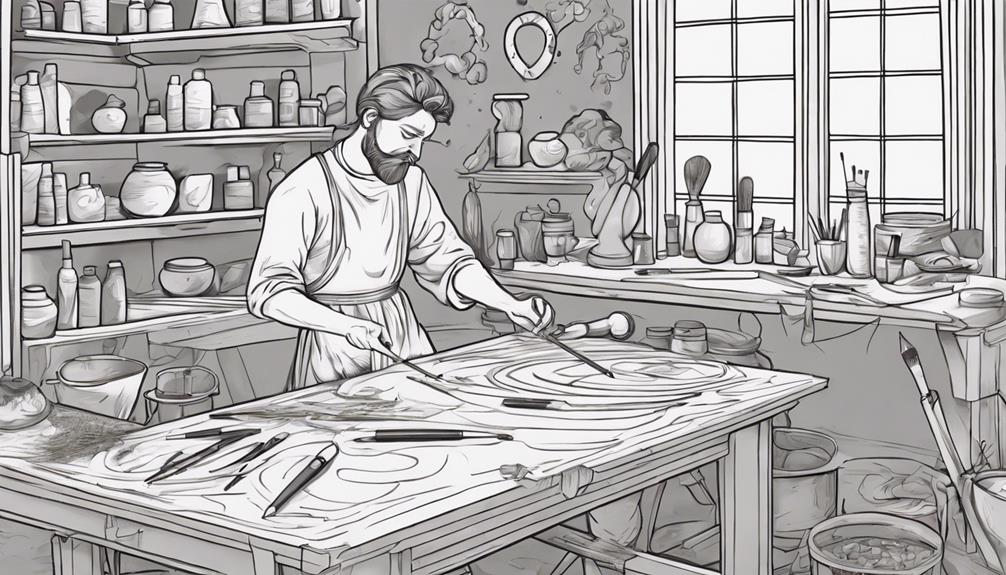
How have historical influences shaped the material selection process for artists throughout different periods of artistic development? Artists have chosen materials in different ways throughout history, influenced by the qualities and availability of materials during their respective periods. In the Renaissance, there was a notable shift towards using higher quality materials such as oil paints and stretched canvases. This move towards quality reflected the artistic desire for more vibrant colors and detailed work.
The Industrial Revolution marked a significant change in material selection for artists, as it introduced mass-produced industrial substances that expanded artists' choices. This period saw a wider range of materials becoming accessible to artists, leading to experimentation with new mediums.
Historical influences on material selection have reflected societal, economic, and technological developments over time. From using natural pigments and materials to exploring modern industrial substances, artists have adapted their choices to suit the needs and trends of their respective eras.
Experimental Approaches in Material Selection
Artists engage in innovative explorations with unconventional materials, such as coffee grounds, ashes, and blood, to expand creative boundaries and challenge traditional artistic norms. In the realm of experimental material selection, artists are constantly pushing the limits of what can be used to create art. This process involves stepping outside conventional practices and venturing into uncharted territories of creativity. Here are four key insights into this experimental approach:
- Materials have different qualities: Artists experiment with unexpected materials to explore the diverse characteristics and possibilities they offer, leading to unique textures and visual effects.
- Artists experimenting with unexpected: By defying conventions and utilizing unusual materials, artists can evoke powerful emotions and provoke thought-provoking responses from viewers.
- Material can be used: The malleability and adaptability of materials allow artists to manipulate them in ways that challenge preconceived notions of art, opening up new avenues for expression.
- Even things we can't: Some artists go beyond conventional art supplies and incorporate elements like natural forces or environmental factors into their creative process, showcasing the beauty of unpredictability and impermanence in art.
Artist-Driven Material Choices
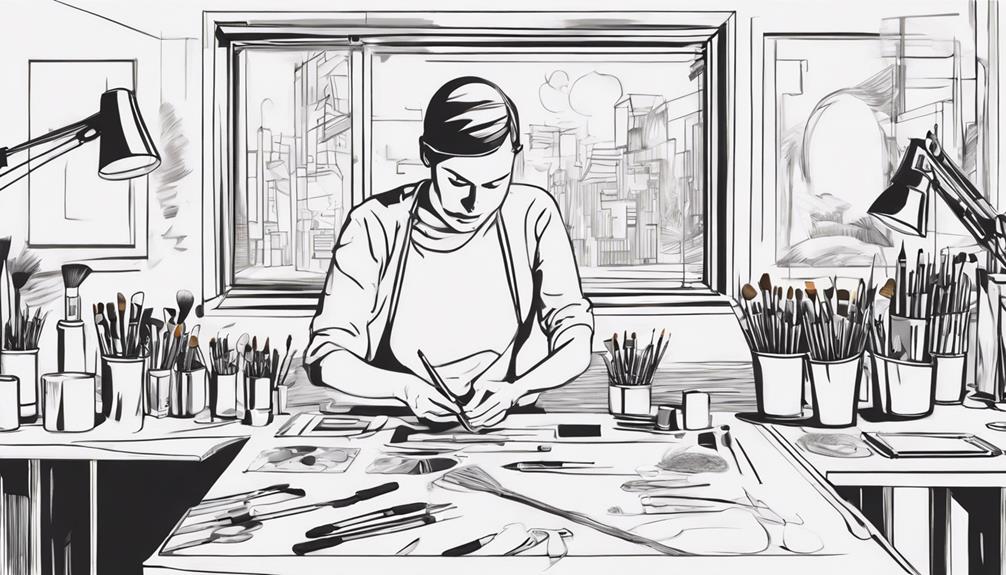
In the realm of artistic expression, the selection of materials plays a pivotal role in shaping the visual and tactile impact of an artwork. Artists meticulously choose materials based on desired qualities such as texture, color, weight, and durability to align with their creative vision. This deliberate selection process is not only driven by the intended aesthetic outcome but also by the symbolic significance that certain materials carry.
Artists are deeply involved in the selection of materials, considering their personal preferences, the message or concept they aim to convey, and how these materials can enhance the overall meaning of the artwork. This hands-on approach reflects the artist's desire to imbue their creations with a sense of authenticity and individuality. Moreover, artists often venture into using unconventional materials to challenge traditional norms and push the boundaries of artistic expression, showcasing their innovative and experimental spirit. Ultimately, artists' material choices are intrinsic to their artistic identity and significantly influence the final aesthetic and impact of their work.
Symbolism in Material Selection
The symbolic resonance of chosen materials in artworks often serves as a profound tool for artists to convey intricate layers of meaning and evoke emotional responses from viewers. Artists strategically select materials to convey specific messages or themes in their creative expression. Symbolic materials in art can represent cultural heritage, personal narratives, or social commentary. The choice of materials can add layers of symbolism and metaphorical significance to the artwork. Symbolism in material selection allows artists to communicate complex ideas and narratives through their choice of materials.
Ways Artists Evoke Emotion Through Symbolic Material Selection:
- Cultural Significance: Materials can carry cultural connotations that resonate with viewers on a deep, emotional level.
- Personal Connection: Artists may use materials that hold personal significance, creating a sense of intimacy and authenticity in the artwork.
- Historical References: By incorporating historically significant materials, artists can evoke nostalgia or contemplation in the audience.
- Social Commentary: Materials chosen for their symbolic value can spark reflection and provoke thought on societal issues or current events.
Nature's Influence on Material Choices
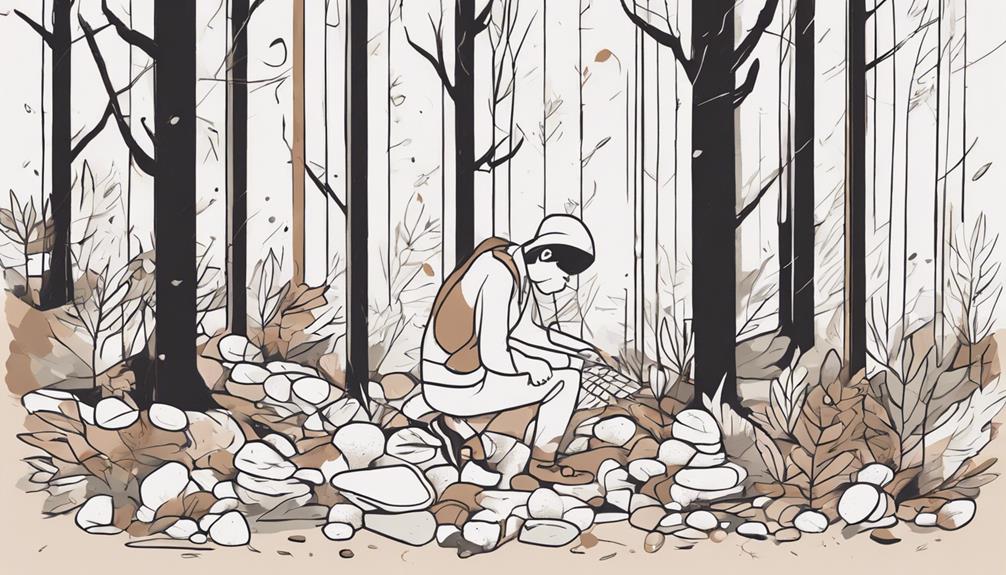
Drawing inspiration directly from the organic world, natural elements profoundly shape artists' choices when selecting materials for their creative endeavors. Nature's influence on material choices can be seen in artists like Richard Long and Andy Goldsworthy, who draw from rocks, leaves, and water to inform their artwork. The textures, colors, and shapes abundant in nature serve as a guiding light for artists in determining the materials they use. By immersing themselves in the natural environment, artists can find a rich source of inspiration that allows them to create pieces deeply connected to the world around them.
Many artists venture into the outdoors to collect materials that resonate with their artistic vision, incorporating these organic elements into their work. This process not only adds a physical piece of nature to their creations but also infuses them with the essence of the environment. Through the careful selection of materials inspired by nature, artists can bring a sense of authenticity and harmony to their art, reflecting the beauty and complexity of the natural world in every brushstroke or sculpture.
Material Texture and Color Considerations
Considering the textural qualities and color palettes of materials is a fundamental aspect of artists' decision-making processes when crafting their artworks. Artists carefully evaluate how texture and color can convey emotions, set tones, and enhance the overall visual impact of their creations. Here are four key points to highlight the significance of material texture and color considerations:
- Emotional Connection: Artists leverage the tactile quality of materials to establish a profound emotional connection with the audience, using textures to evoke specific feelings or responses.
- Aesthetic Harmony: Color selection is pivotal in material choice, as artists aim to achieve aesthetic harmony through the strategic use of color palettes that complement or contrast with the chosen textures.
- Light Interaction: The tactile quality of materials influences how light interacts with the surface, creating dynamic visual effects that contribute to the artwork's overall composition.
- Creative Exploration: Artists experiment with different material textures and colors to explore contrasts, generate visual interest, and express their unique artistic visions in innovative ways.
Unconventional Materials in Art Creation
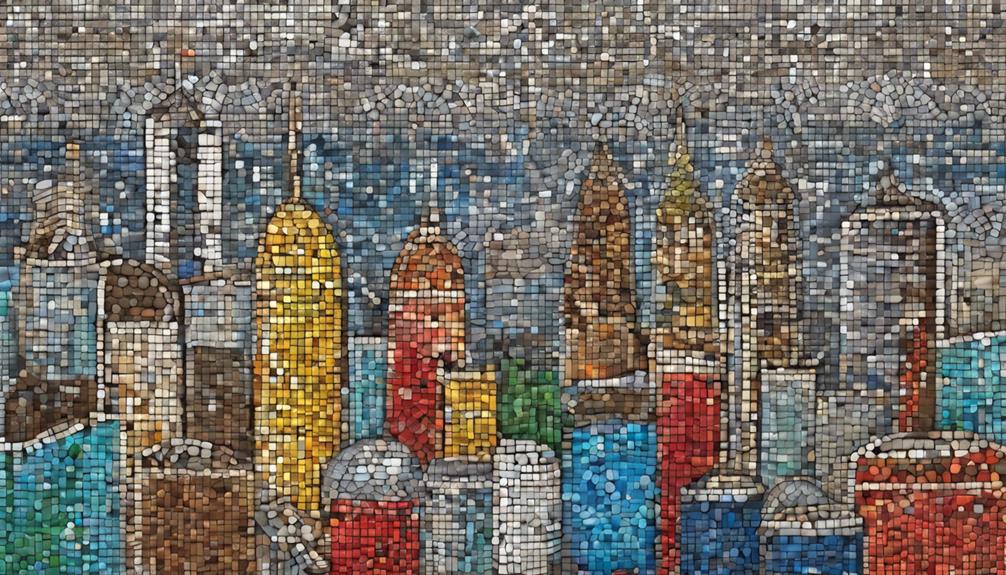
Artists often venture beyond traditional mediums, opting for unconventional materials to infuse their creations with innovation and meaning. These unique material choices reflect a deliberate exploration of resources and push the boundaries of conventional artistry. The impact of using unconventional materials can be profound, offering artists a platform to experiment, challenge norms, and craft distinctive narratives that captivate audiences.
Unusual Material Choices
Using unconventional materials in art creation challenges traditional notions of artistic expression and pushes boundaries in the realm of creativity.
- Artists like Wim Delvoye utilize materials such as tires and human skin, transforming them into thought-provoking pieces.
- El Anatsui repurposes discarded items like bottle caps and copper wire to construct awe-inspiring large-scale sculptures, highlighting the beauty in the overlooked.
- Vik Muniz recreates famous artworks using unconventional materials like chocolate, sugar, and garbage, adding layers of meaning and depth to his creations.
- Mona Hatoum incorporates everyday objects like kitchen utensils and furniture into her installations, provoking contemplation on the mundane's significance in our lives.
Creative Resource Exploration
Exploring unconventional materials in art creation opens up a realm of innovative possibilities for artists seeking to challenge traditional artistic boundaries and provoke new perspectives. Artists like Annette Messager, Nnenna Okore, El Anatsui, Tara Donovan, and Chakaia Booker exemplify the creative exploration of materials in their works. By utilizing hair, fabric, found objects, newspapers, burlap, yarn, discarded bottle caps, straws, buttons, plastic cups, and rubber tires, these artists showcase the transformative power of unconventional materials. This exploration not only demonstrates the versatility and creativity in utilizing a wide range of resources but also allows for the conveyance of profound narratives and themes through art. The integration of such diverse materials highlights the endless opportunities for innovation and expression in the artistic realm.
Impact on Artistry
The utilization of unconventional materials in art creation not only challenges conventional artistic boundaries but also enriches the depth and complexity of artistic expression.
Emotions Evoked:
1) Curiosity: Prompting viewers to explore the unconventional materials used in the artwork.
2) Intrigue: Drawing viewers in with the unique textures and compositions created by unconventional materials.
3) Reflection: Encouraging contemplation on the deeper meanings and messages embedded in the choice of materials.
4) Inspiration: Inspiring other artists to think outside the box and experiment with unconventional materials in their own work.
Frequently Asked Questions
How Do Artists Make Choices About Materials and Techniques for Their Art?
Artists make deliberate choices about materials and techniques for their art by considering elements such as color palette, texture choices, medium selection, tool preferences, and surface options. These decisions are pivotal in conveying the artist's intended message and aesthetic vision. By strategically selecting materials and techniques, artists can create impactful and enduring artwork that resonates with viewers on a profound level. Each choice contributes to the overall visual language and emotional impact of the piece.
How Do Artists Decide What to Draw?
Artists decide what to draw based on various sources of inspiration, such as nature, personal experiences, and social issues. Their creative process is influenced by personal preferences, emotional connections, and a distinct artistic vision. Through a blend of historical events, cultural influences, and individual narratives, artists navigate a complex landscape of themes and concepts to determine their subject matter. Experimentation with different styles and subjects enables artists to explore new perspectives and ideas in their work.
What Is a Material Chosen by the Artist for Working?
In art creation, the choice of material is a critical component that significantly influences the overall aesthetic and conceptual aspects of the artwork. Artists carefully consider various factors such as material availability, artistic style, and their creative vision when selecting materials for their work. Through experimentation and exploration, artists push boundaries to discover new possibilities for artistic expression, ultimately shaping the unique identity and meaning of their creations.
What Sources Do Artists Use to Find Their Subjects?
Artists utilize a variety of inspiration sources to find their subjects, drawing from personal experiences, emotions, observations, literature, music, and cultural interactions. These diverse influences contribute to a dynamic creative process, shaping artists' subject selection. Through exploration methods such as travel, engagement with different communities, and experimentation with abstract concepts, artists develop a rich tapestry of artistic influences that inform their choice of subjects for their artworks.
Conclusion
In conclusion, artists carefully consider a range of factors when choosing their materials, including historical influences, experimental approaches, symbolism, nature's influence, texture, color considerations, and unconventional options. By exploring these various aspects of material selection, artists are able to create meaningful and impactful works of art that push boundaries and challenge traditional norms. Through their deliberate choices, artists are able to convey their desired message and evoke emotional responses from their audience.
